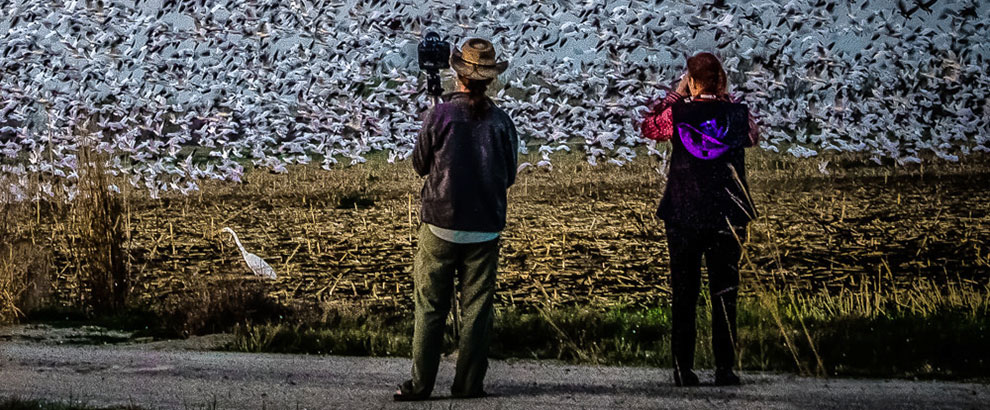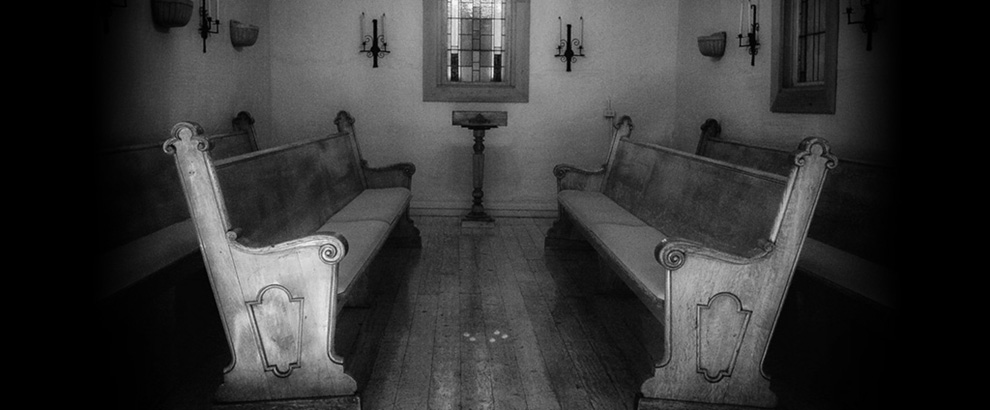
“So many things had a way of looking finer, when they were not so close,” muses coal merchant Bill Furlong, the protagonist in Claire Keegan’s finely sculpted 2021 novella, “Small Things Like These.” Furlong had been admiring the river that passes through his small Irish town, but upon approaching it, finds himself wondering “which he rathered: the sight of town or its reflection on the water.”
(Side note right off the top: “…he rathered…” Please don’t ever listen to anyone who suggests language, “mere” words, aren’t beautiful and endlessly pliable things.)
The same basic questions—distanced or closeup? gauzy appearance or sharpened reality?—run like a low-voltage current through this slim tale of 110 pages that lingers long after works of triple the length take leave of one’s consciousness with the morning mist. At barely an hour’s read and available in full here, Keegan’s tale is a case study in the sensual, aesthetic pleasures of reading for reading’s sake.
Try as he might to avert his gaze from what he sees in that shed, he can no longer refuse to see what is before his eyes and is crying piercingly to his heart.
Furlong is an unassuming man of few words despite the five daughters and engaged wife who keep the home fires burning bright while he drives his aging lorry laden with coal on its appointed rounds.
One of his stops is at the local convent, a kind of shiny expression of God on a hill, where ostensibly selfless nuns devote themselves to righting the hard-scrabble lives of young women, girls, really, who are the throwaways of society.
They include unmarried mothers (and their children, unless they’re adopted out), those deemed promiscuous, uncontrollable or otherwise burdensome to their families.
Despite the religious blanket the convent throws over the whole town, whispers are sometimes heard about the conditions the girls are subjected to while toiling in the large commercial laundry operation for which they supply the unpaid labor.
Those whispers never reach any critical mass or volume, though.
On one delivery day, Furlong goes searching for a nun to sign in his load and inadvertently comes upon a group of shoeless, unkempt girls on hands and knees scrubbing furiously on the chapel floor. One sets upon him, begging for a lift to the river, or even just the gate, or to his home where she will “work till I drop for ya, sir.”
Failing that, she pleads, “All I want to do is drown meself.”
Furlong is backed off when a young nun arrives on the scene and the girls set to the floors again. Later, trying to convey some of what he experienced to his wife at home, he is rebuffed.
Not our business, not our problem, she implores, already exasperated, the portents of “getting involved” or even caring in any way striking palpable—and hardly irrational—alarm bells deep inside her. Among them: her five daughters attend the convent school in good standing, partly financed by the business Furlong conducts there.
And as one might expect, the conditions at the school, the convent’s public face, have zero in common with the burdens of the girls scrubbing floors and linen unseen inside the convent walls.
The convent, after all, has a way of looking finer…when it is not brought close.
***
***
The problem is that Furlong, ever the decent person of kindness and conscience, comes into contact with an even deeper part of himself after a subsequent encounter with a girl locked in the coal shed. He’d been orphaned himself as a boy, but taken in and supported enough by a kindly woman to make a life for himself. What if that had not happened? The question gnaws at him.
Try as he might to avert his gaze from what he sees in that shed, and as much reason as he might have to protect the modest but relatively safe cocoon of his family’s life, he can no longer refuse to see what is before his eyes and is crying piercingly to his heart.
“Small Things Like These” is a fictionalized account, set in 1985, of the real-world horror of the Magdalene Laundries, a consortium of institutions run by the Catholic Church that kept the “fallen women” described above under lock and key in virtual slave conditions between the 18th and late 20th centuries. (The last one closed in 1996.)
Subsequent exposure and archival research have yielded estimates of 10,000-30,000 girls and women who were victimized in the period between 1922-1996 alone, with both the church authorities and local communities looking continuously away from the lives they ruined. Adding to the horror, an estimated 9,000 of their children died from basic neglect over the years, large swaths of them unearthed in mass graves and even in one site’s septic tank decades later.
The “estimates” above are only due to the fact that “most religious orders have refused to provide archival information for investigators and historians,” according to a comprehensive 2019 article at history.com.
***
This monstrosity is known only on a local, personal level by the fictionalized Bill Furlong. Tortuous as the circumstances and decisions he faces are, Keegan’s is, in the end, not just a beautifully tended and tender book, but also a hopeful one.
The hope resounds only after Furlong plumbs the depths of his own spiritual urgencies, admits to himself that despite his dawning knowledge of what actually transpires behind the scrubbed convent walls, he is still holding back from acting on that knowledge.
Late in the tale, the convent’s Mother Superior has had him to tea and paid him for the latest coal delivery. He now knows of the evil lurking under her “care,” and she knows that he knows. And still, they exchange pleasantries, him again not speaking for the girls who have begged him for help, leaving and later lambasting himself for having then “gone on, like a hypocrite, to Mass.”
To Mass! The suffering of the world is embodied in this actual suffering soul before him, and the whole point of the Mass, of religion, its very essence and claim as a constellation of symbols and rituals, is its redemptive power to comfort and inspire the sufferers. And he (we?) step around this oppressed, hungry, abused child of God, dressed in rags, to attend the symbolic ritual of a Mass?
You’ve probably guessed by now that Furlong decides differently the next time he faces such a choice.
***
***
History depends on the Bill Furlongs among us. If suffering is indeed a constant of the world, so too is the human evil that is responsible for such a huge portion of that suffering.
Evil, and the lust for power and dominion over our fellow humans that is its most persistent expression, lays down a challenge to those who would be good. It is a force that threatens annihilation to those who resist or attempt to bargain with it.
That risk of annihilation causes countless otherwise good people to look away, to go along to get along, to forsake some of their freedoms (and all the freedoms of their scapegoated neighbors if need be) in exchange for their own security. But that security is both a straitjacket and a mirage, as Pastor Martin Niemöller’s famous “First They Came” poem after the Holocaust observed with such haunting insight.
Today, we live in a time when fundamental freedoms are under assault near and far. The evildoers in authoritarian regimes around the world gloat at the convulsions of democracies where virulent, nativist populisms rise in power. What to do?
Much as we need to mind our home fires, commit to community, to each other, to ourselves, our heirs, to remember the arts and trees and songs and sun, in the end, Bill Furlong stands as a model for this and every time. One must meet the exigencies of one’s era, one “small thing” begetting another, one small person encouraging another, one small act of righteous protest and kindness and response to evil adding up, en masse and over time, to the good most always yearning for expression and confirmation in the human heart.
***
***
Though some details were changed per usual in a book-to-film adaptation, the emotional thrust of the book was well preserved in this recent production, with Cillian Murphy morphing remarkably from Robert Oppenheimer to Bill Furlong…
***
PLEASE NOTE: My Comments section usually perched below is currently suffering from the malady known as “technical wonkiness,” so while my web developers work feverishly to cobble together a repair, please visit my public Facebook page at https://www.facebook.com/andrew.hidas/ and scroll down to the post regarding this blog, where you can join the discussion at your leisure.
“Small Things Like These” was the precursor to another Keegan jewel—“Foster,” reviewed in this space just over a year ago
Flickr: https://www.flickr.com/photos/andrewhidas/
Deep appreciation to the photographers! Unless otherwise stated, some rights reserved under Creative Commons licensing.
Elizabeth Haslam, whose photos (except for the books) grace the rotating banner at top of page.
https://www.flickr.com/photos/lizhaslam/
Library books photo by Larry Rose, all rights reserved, contact: larry@rosefoto.com
Icy tree by Hafsa Nabeel, Pickering, Canada https://www.flickr.com/photos/hafsacreations/
Laundry in the Sean Ross Abbey from historical archives
Hands by Claudio Schwarz, Zurich, Switzerland https://unsplash.com/@purzlbaum

















Recent Comments